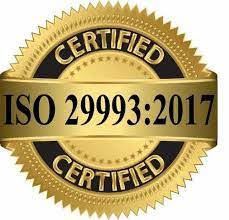
|
|
After World War II, a number of new management consulting firms formed, most notably Boston Consulting Group, founded in 1963, which brought a rigorous analytical approach to the study of management and strategy. Work done at Boston Consulting Group, McKinsey, Booz Allen Hamilton, and the Harvard Business School during the 1960s and 70s developed the tools and approaches that would define the new field of strategic management, setting the groundwork for many consulting firms to follow. In 1983, Harvard Business School's influence on the industry continued with the founding of Monitor Group by six professors. One of the reasons why management consulting grew first in the USA is because of deep cultural factors: it was accepted there, (contrary to say, Europe), that management and boards alike might not be competent in all circumstances; therefore, buying external competency was seen as a normal way to solve a business problem. This is referred to as a "contractual" relation to management. By contrast, in Europe, management is connected with emotional and cultural dimensions, where the manager is bound to be competent at all times. This is referred to as the "pater familias" pattern. Therefore seeking (and paying for) external advice was seen as inappropriate. However, it is sometimes argued that in those days the average level of education of the executives was significantly lower in the USA than in Europe, where managers were Grandes Ecoles graduates (France) or "Doktor" (Germany), though this is very difficult to quantify given the vastly differing management structures in American and European businesses. It was only after World War II, in the wake of the development of the international trade led by the USA, that management consulting emerged in Europe. The current trend in the market is a clear segmentation of management consulting firms. In general, various approaches to consulting can be thought of as lying somewhere along a continuum, with an 'expert' or prescriptive approach at one end, and a facilitative approach at the other. In the expert approach, the consultant takes the role of expert, and provides expert advice or assistance to the client, with, compared to the facilitative approach, less input from, and fewer collaborations with, the client(s). With a facilitative approach, the consultant focuses less on specific or technical expert knowledge, and more on the process of consultation itself. Because of this focus on process, a facilitative approach is also often referred to as 'process consulting,' with Edgar Schein being considered the most well-known practitioner. The consulting firms listed above are closer toward the expert approach of this continuum. Many consulting firms are organized in a matrix structure, where one 'axis' describes a business function or type of consulting: for example, strategy, operations, technology, executive leadership, process improvement, talent management, sales, etc. The second axis is an industry focus: for example, oil and gas, retail, automotive. Together, these form a matrix, with consultants occupying one or more 'cells' in the matrix. For example, one consultant may specialize in operations for the retail industry, and another may focus on process improvement in the downstream oil and gas industry.
|
|
|
|
|
|
|
|
|
"We now accept the fact that learning is a lifelong process of keeping abreast of change. And the most pressing task is to teach people how to learn." -- Dr. Peter Drucker, Austrian-born American management consultant, educator
|
Home Home Certifications AMC® Training Council Continuing Ed Awards Careers Board Government Jobs Membership Ethics Handbook Events Benefits Exam Sample Omicron Chi News Accredited Degrees Management Degrees Accounting Degrees Financial Analyst Degrees Human Resource Degrees Application Links Disclaimer

Accreditation Bodies: www.GAFM.com * www.GAFM.org * www.CertifiedProjectManager.eu * www.AAFM.org * Certified Project Manager * Certified e-Commerce Consultant *Royal Law Society *Royal Business Society*Royal Business College*Royal Fellows*Royal Economics Academy*Oxford Law School*AAFM*Certified International Project Manager *

